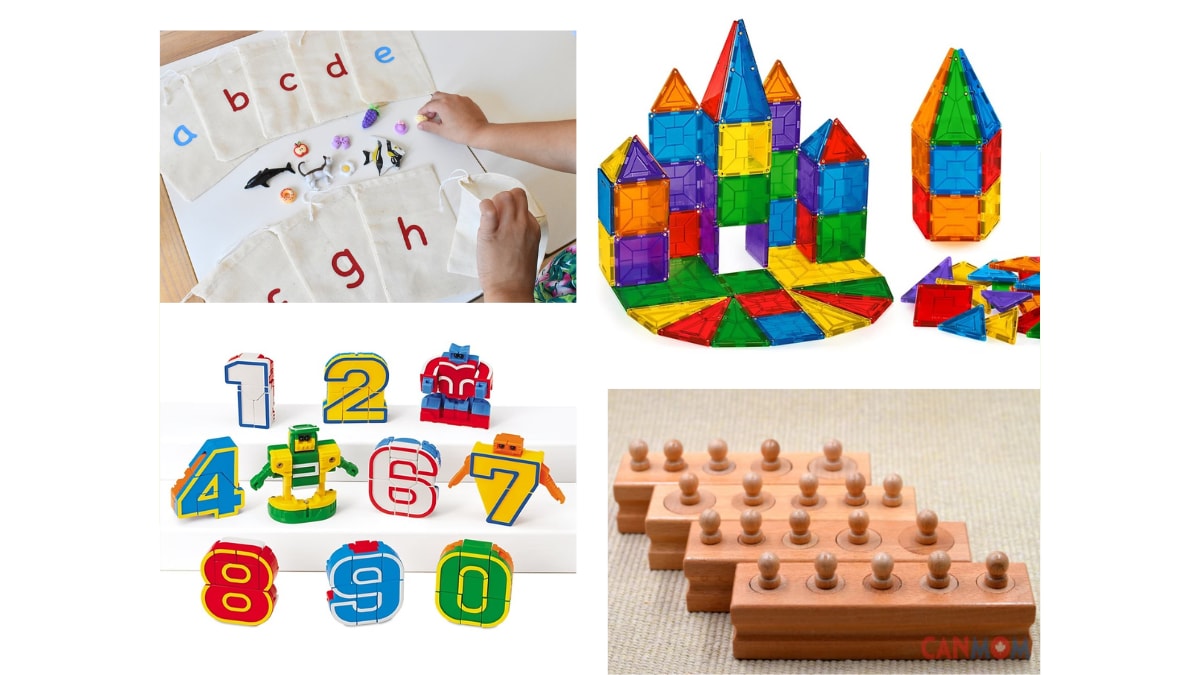Raising kids is expensive. Many of us began budgeting for our new babies before they even arrived, but few could have predicted just how rapidly the costs of child care would grow over the last few years. According to the Care.com 2024 Cost of Care Survey, 60% of families are spending 20% or more of their annual household income on child care.
The good news is there may be a child care subsidy or financial assistance program out there to help pay for child care expenses. See which resources you can take advantage of to help lower the costs of raising your child.
Child care subsidies and government programs
1. State assistance child care subsidies
The federal government provides money to individual states to help offset the costs of child care, but the aid available to families varies widely by state.
Many subsidies (called vouchers in some states) have strict income guidelines and are generally for families with children under 13. (The age limit is often extended if the child has a disability.) Be sure to check the requirements because many subsidies permit in-home child care, but some only accept daycare centers.
How to get it: Most assistance is administered through the Child Care and Development Fund block grants. Find the child care resource for your state at the bottom of this article. If you need to use an authorized provider, ask if they will put you in touch with an agency that can help you find one.
Some states distribute funds through social or health departments or agencies. For example:
- The Children’s Cabinet in Nevada can refer families to providers, help them apply for subsidies and can even help families who want to pay a relative for care.
- North Carolina’s Smart Start is a public/private partnership that offers funding for child care.
You may also check the National Women’s Law Center’s latest report on state child care assistance policies.
2. Assistance for military families
The federal government offers subsidies to members of the military and the Department of Defense. Eligibility is determined by each branch of service or agency.
How to get it: Visit Child Care Aware of America to find out the specific requirements for your branch or agency.
3. Early Head Start and Head Start programs
Look into the federally funded preschool programs called Early Head Start (for infants and toddlers under age 3) and Head Start (for 3- and 4-year-old kids). These programs are primarily available for kids from eligible, low-income families.
How to get it: Reach out to your nearest Head Start program to find out if your family is eligible.
4. Free pre-K
While still fairly limited in the U.S., some cities and states do offer free pre-K programs (for kids between 3 and 5). When available, free preschool programs are typically reserved to help eligible, low-income families afford child care and prepare kids for kindergarten.
How to get it: Visit your state’s early learning resources page to see if free Pre-K programs are offered where you live and, if they are, to find out how to apply.
Tax credits
5. Child and Dependent Care Tax Credit
Working families can qualify for a tax break using the Child and Dependent Care Tax Credit. With this tax credit, you are able to itemize up to $3,000 in child care expenses per child ($6,000 maximum).
How to get it: When you file your personal income tax return, use IRS Form 2441 to itemize up to $3,000 in child care expenses per child ($6,000 maximum), which brings about $600 per child ($1,200 maximum) in tax savings.
If you have more than one child and have access to a Dependent Care Flexible Spending Account (FSA), the rules are slightly different.
“Families can’t use their FSA and Form 2441 for the same expenses,” says Tom Breedlove, senior director of Care HomePay. “So that’s why a family who has already set aside the maximum of $5,000 in their FSA can only claim $1,000 toward the Child and Dependent Care Tax Credit.”
If you do have an FSA, you can use Form 2441 for the additional $1,000 in child care expenses to save an additional $200.
6. Earned Income Tax Credit (EITC)
The EITC is a tax credit available to low- to moderate-income wage earners. The credit can range from a few hundred to several thousand, depending upon how many children you have and what your filing status is.
How to get it: Visit the IRS website to see if you qualify for EITC and how to file.
Employer- and school-sponsored programs
7. Dependent Care Accounts
The federal government offers this type of Flexible Spending Account through employers. Like the Child and Dependent Care tax credit, families are eligible if both spouses (or the parent in a single-parent household) are working or going to school and if their children are under the age of 13. If your job offers a Dependent Care Account, you can put aside up to $5,000 in pre-tax dollars to pay for child care expenses and save approximately $2,000 by contributing the maximum.
How to get it: Talk to your Human Resource department to see if a Dependent Care Account is available to you and how you can get started.
8. Work-sponsored child care benefits
Companies are starting to recognize the burden that working parents face when it comes to child care — and they’re creating benefits to help, which may include:
- Child care reimbursements for working parents.
- Tuition discounts for employees who use child care providers in an established company network.
- Backup care programs, like those offered through Care for Business, which connect working parents with gaps in child care coverage to vetted, quality child care options at low or no cost.
How to get it: Check with your Human Resource representative to see if these are benefits that your company offers.
9. School-sponsored subsidies
If you or your spouse is a student, your school may offer financial assistance for paying for child care. For instance, Oregon State University offers a plan that helps pay for various types of care. Some universities also offer low-cost, on-campus child care for eligible students.
Some states have grants for degree-seeking students to help pay for child care, but they’re often distributed through offices of varying names. Here are a few examples:
- In Massachusetts, funds are issued through the Department of Early Education and Care.
- In Oregon, funds go through the Office of Student Access and Completion (OSAC).
- In Utah, students can go through the Office of Child Care.
How to get it: Because these programs are specific to each school, your best bet is to check with the individual college or university.
Child care subsidies, assistance, services and resources by state and territory
Find your state or territory in this list below to connect to current information on child care subsidies, financial assistance, services and resources where you live.
- Alabama: Child Care Services Division, Alabama Department of Human Resources
- Alaska: Child Care Program Office, Division of Public Assistance, Alaska Department of Health and Social Services
- American Samoa: Child Care Division, American Samoa Department of Human and Social Services
- Arizona: Child Care Administration, Arizona Department of Economic Security
- Arkansas: Division of Child Care and Early Childhood Education, Arkansas Department of Human Services
- California: Early Education and Support Division (EESD), California Department of Education
- Colorado: Division of Early Care and Learning, Office of Early Childhood, Colorado Department of Human Services
- Commonwealth of the Northern Mariana Islands: Commonwealth of the Northern Mariana Islands, Department of Community and Cultural Affairs
- Connecticut: Bureau of Teaching and Learning, Office of Early Childhood, Connecticut Department of Social Services
- Delaware: Delaware Department of Health and Social Services
- District of Columbia: D.C. Office of the State Superintendent of Education
- Florida: Office of Early Learning, Florida Department of Education
- Georgia: Bright from the Start: Georgia Department of Early Care and Learning
- Guam: Division of Public Welfare, Guam Department of Public Health and Social Services
- Hawaii: Benefit, Employment, and Support Services Division, Hawaii Department of Human Services
- Idaho: Idaho Department of Health and Welfare
- Illinois: Division of Family and Community Services, Office of Early Childhood, Illinois Department of Human Services
- Indiana: Bureau of Child Care, Division of Family Resources, Indiana Family and Social Services Administration
- Iowa: Bureau of Child Care and Community Services, Division of Adult, Children and Family Services, Iowa Department of Human Services
- Kansas: Economic and Employment Services, Kansas Department for Children and Families
- Kentucky: Department for Community Based Services, Kentucky Cabinet for Health and Family Services
- Louisiana: Early Childhood Division, Louisiana Department of Education
- Maine: Office of Child Care Family Services, Maine Department of Health and Human Services
- Maryland: Office of Child Care, Division of Early Childhood Development, Maryland State Department of Education
- Massachusetts: Massachusetts Department of Early Education and Care
- Michigan: Child Development and Care Program, Office of Great Start, Michigan Department of Education
- Minnesota: Community Partnerships and Child Care Services, Minnesota Department of Human Services
- Mississippi: Policy and Programs Unit, Division of Early Childhood Care and Development, Mississippi Department of Human Services
- Missouri: Early Childhood and Prevention Services Section, Children’s Division, Missouri Department of Social Services
- Montana: Early Childhood Services Bureau, Montana Department of Public Health and Human Services
- Nebraska: Nebraska Department of Health and Human Services
- Nevada: Child Care and Development Program, Division of Welfare and Supportive Services, Nevada Department of Health and Human Services
- New Hampshire: Child Development Bureau, Division for Children, Youth and Families, New Hampshire Department of Health and Human Services
- New Jersey: Division of Family Development, New Jersey Department of Human Services
- New Mexico: Early Childhood Services Division, New Mexico Children, Youth and Families Department
- New York: Division of Child Care Services, New York State Office of Children and Family Services
- North Carolina: Division of Child Development and Early Education, North Carolina Department of Health and Human Services
- North Dakota: North Dakota Department of Human Services
- Ohio: Bureau of Child Care Policy and Technical Assistance, Office of Family Assistance, Ohio Department of Jobs and Family Services
- Oklahoma: Child Care Services, Oklahoma Department of Human Services
- Oregon: Office of Child Care, Early Learning Division, Oregon Department of Education
- Pennsylvania: Office of Child Development and Early Learning, Pennsylvania Departments of Human Services
- Puerto Rico: Puerto Rico Administration of Integral Child Care and Development
- Rhode Island: Family and Children’s Services, Rhode Island Department of Human Services
- South Carolina: Division of Child Care Services, South Carolina Department of Social Services
- South Dakota: Division of Child Care Services, South Dakota Department of Social Services
- Tennessee: Tennessee Department of Human Services, Citizens Plaza State Office Building
- Texas: Workforce Policy and Program Assistance, Workforce Development Division, Texas Workforce Commission
- U.S. Virgin Islands: Office of Child Care and Regulatory Services, U.S. Virgin Islands Department of Human Services
- Utah: Office of Child Care, Utah Department of Workforce Services
- Vermont: Child Development Division, Department for Children and Families, Vermont Agency of Human Services
- Virginia: Division of Child Care and Early Childhood Development, Virginia Department of Social Services
- Washington: Washington State Department of Children, Youth & Families
- West Virginia: Division of Early Care and Education, Bureau for Children and Families, West Virginia Department of Health and Human Resources
- Wisconsin: Division of Early Care and Education, Wisconsin Department of Children and Families
- Wyoming: Early Childhood Division, Wyoming Department of Family Services






